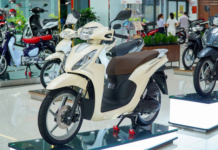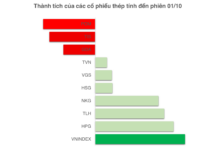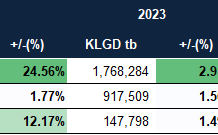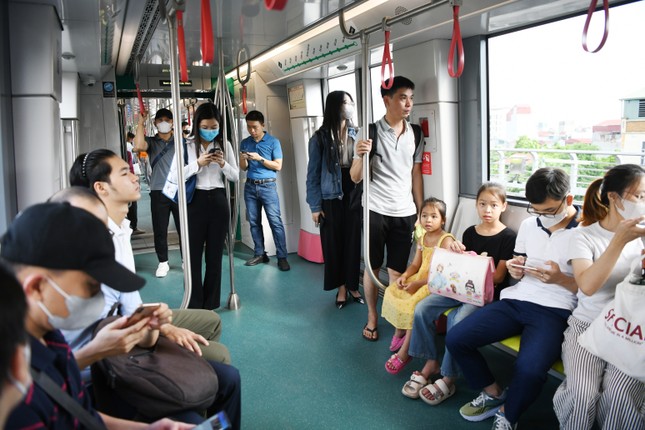A 25-Mile Journey to Experience the Urban Railway
After more than 14 years of construction, on August 8, the Nhon-Hanoi urban railway (metro) project officially commenced operations with a trial run on the elevated section from Nhon to Cau Giay, spanning 8.5 kilometers.
Even though the first train was scheduled for 8 am, eager citizens started gathering at the elevated Cau Giay station (S8 station, departing for Nhon) as early as 7 am on August 8. By 8 am, both sides of the platform were packed with excited passengers. When the first train, adorned with pink and blue hues and adorned with the symbol of the Temple of Literature, pulled into the station, its four carriages with a capacity of over 900 passengers, were filled within just 2 minutes.
At Nhon station, Ms. Phung Thi Thu, a 67-year-old resident of Son Tay, shared that she and five of her friends traveled almost 25 miles to be among the first to experience the newly inaugurated elevated railway. “Knowing that today was the first day of operations, we were thrilled and made plans last night. I took the bus from Son Tay at 6 am to be here early. This is our first time riding such a train, and we are both excited and nervous, feeling very special,” Ms. Thu enthusiastically recounted.
The entire project encompasses 12 stations (8 elevated and 4 underground), with the 8 elevated stations becoming operational on August 8. Each Nhon-Hanoi train consists of 4 carriages, capable of accommodating 944 to 1,124 passengers. The train can transport over 16,000 passengers per hour in both directions. Designed for a maximum speed of 80 km/h, the train operates at a commercial speed of approximately 35 km/h. The Nhon-Hanoi train boasts higher speed and acceleration capabilities compared to the Cat Linh-Ha Dong train. Due to its higher speed, the initial departure may feel slightly jerky compared to the Cat Linh-Ha Dong line. For the first 15 days of commercial operations, all passengers will be offered free rides. After this promotional period, a single journey will cost VND 12,000, and a day pass will be priced at VND 24,000 (unlimited rides).
Many long-term residents of Hanoi were also excited about the line’s inauguration after more than a decade of anticipation. Ms. Tram Anh, a 40-year-old resident of Cau Dien, Nam Tu Liem, shared that she had experienced several delays and postponements, leaving her feeling disappointed. Now that the line is officially operational, she wanted to try it out to erase that feeling. “This new line will benefit me and many others by providing a more convenient means of transportation, saving time, and contributing to environmental protection,” Ms. Tram Anh said.
To ensure the smooth operation of the trains on August 8, both the investor, the Hanoi Metropolitan Railway Management Board (MRB), and the operator, Hanoi Metro, deployed over 300 personnel, including engineers, train drivers, and dispatchers across the 8 elevated stations to guide and assist citizens in accessing and boarding the trains.
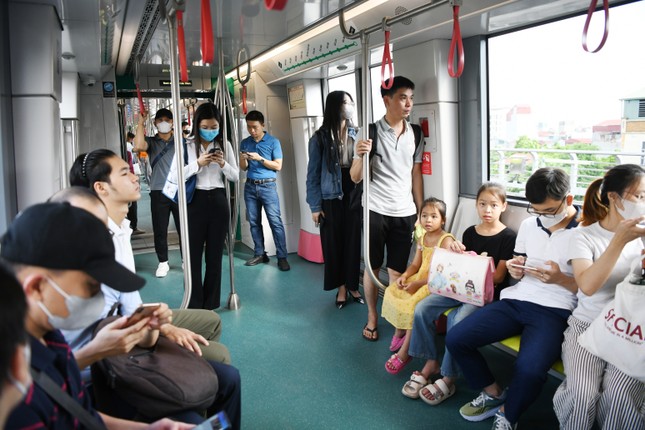
Citizens experiencing the Nhon-Hanoi metro on August 8. Photo: Nhu Y
In a conversation with the Tien Phong Newspaper, Mr. Vu Hong Truong, General Director of Hanoi Metro (the operator), revealed that as of 4 pm on August 8, the first day of operations, they had recorded 14,737 passengers. On average, more than 1,800 passengers traveled on the Nhon-Hanoi urban railway per hour. This figure is comparable to the number of passengers on the Cat Linh-Ha Dong line during regular days (approximately 27,000 passengers per day).
Anticipating a Reduction in Private Vehicles and Traffic Congestion
Mr. Vu Hong Truong, General Director of Hanoi Metro, emphasized that with a capacity to transport 15,000 to 20,000 passengers per hour, the Nhon-Hanoi urban railway has the potential to significantly reduce the number of private vehicles traveling on National Highway 32 from Cau Giay to Nhon.
Mr. Truong elaborated that before the Cat Linh-Ha Dong line became operational, National Highway 6 from Nga Tu So to Yen Nghia, a 10-kilometer stretch, frequently experienced traffic congestion, with 5 to 7 regular congestion points during rush hours. However, since the inauguration of the Cat Linh-Ha Dong line in 2021, the Hanoi Department of Transport and the Hanoi Police have reported a continuous decrease in congestion points along this route. While reducing private vehicles and traffic congestion requires a multifaceted approach, the significant hourly passenger capacity of the Cat Linh-Ha Dong line, especially during peak hours, has undoubtedly contributed to a decrease in the number of private vehicles and travelers on the Nguyen Trai-Tran Phu-Ha Dong route. “Additionally, the 13-kilometer journey from Cat Linh to Yen Nghia Bus Station in Ha Dong, which typically takes 45 minutes to an hour by car or motorbike, can now be completed in just 15 minutes by electric train. This mode of transportation offers stable and punctual journeys, unaffected by road traffic conditions or weather,” Mr. Truong added.
Hanoi’s Vision: 9 Urban Railway Lines
According to the master plan approved by the Prime Minister in 2010, Hanoi aims to develop and operate 9 urban railway lines by 2030, with a long-term vision towards 2050. These lines include: Cat Linh – Ha Dong (Line 2A), Nhon – Hanoi (Line 3), Yen Vien – Ngoc Hoi (Line 1), Me Linh – Sai Dong (Line 4), Van Cao – Hoa Lac (Line 5), Noi Bai – Ngoc Hoi (Line 7), Me Linh – Ha Dong (Line 8), and Son Dong – Mai Dich – Duong Xa (Line 9). To date, after 14 years of implementing this master plan, Hanoi has successfully inaugurated two projects: Cat Linh – Ha Dong (Line 2A) and the elevated section of Nhon – Hanoi (Line 3).
Mr. Nguyen Ba Son, Deputy Head of the MRB, concurred with this assessment and provided additional context: Prior to the inauguration of the Nhon-Hanoi line, the investor and the French contractor conducted safety tests by operating the train during peak hours on the elevated section from the Nhon depot to Cau Giay station (approximately 10 kilometers). The train completed this journey in just 15 minutes. Achieving this travel time by car during peak hours on National Highway 32 from Nhon to Cau Giay would be a challenging feat.
Senior Lieutenant Pham Van Chien, Head of the 6th Traffic Police Team, stated that with its impressive operational capabilities and passenger capacity, the Nhon-Hanoi urban railway is expected to bring about a transformation in transportation along National Highway 32. To facilitate citizen access to the train, on August 8, the 6th Traffic Police Team deployed task forces to ensure smooth traffic flow and guide citizens to the stations. “In addition to regulating and directing traffic to prevent congestion, we collaborated with the local wards hosting the elevated stations to maintain order at the station entrances and on the sidewalks surrounding the stations,” Mr. Chien remarked.

